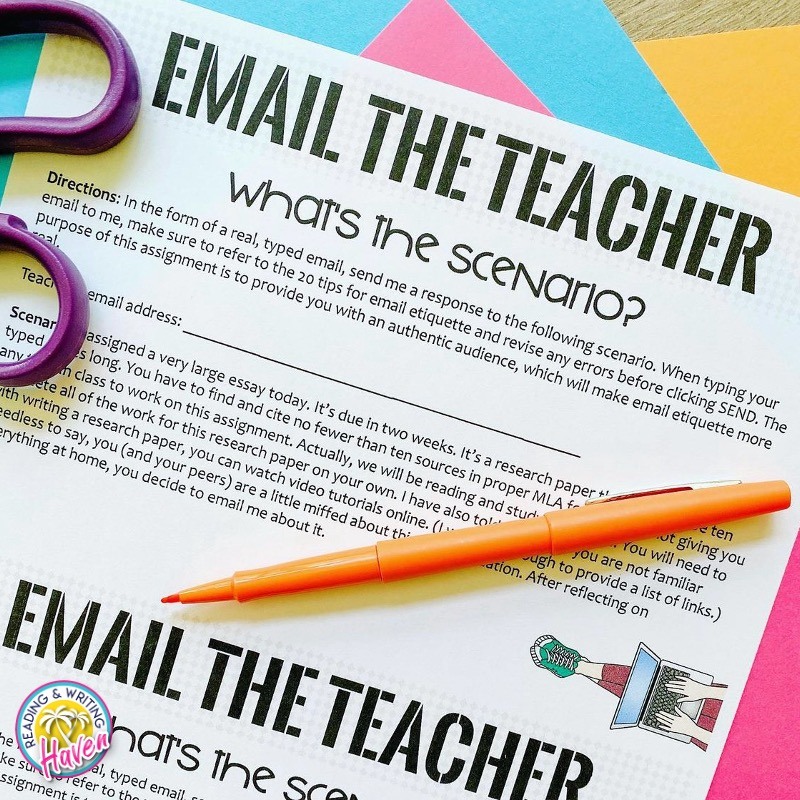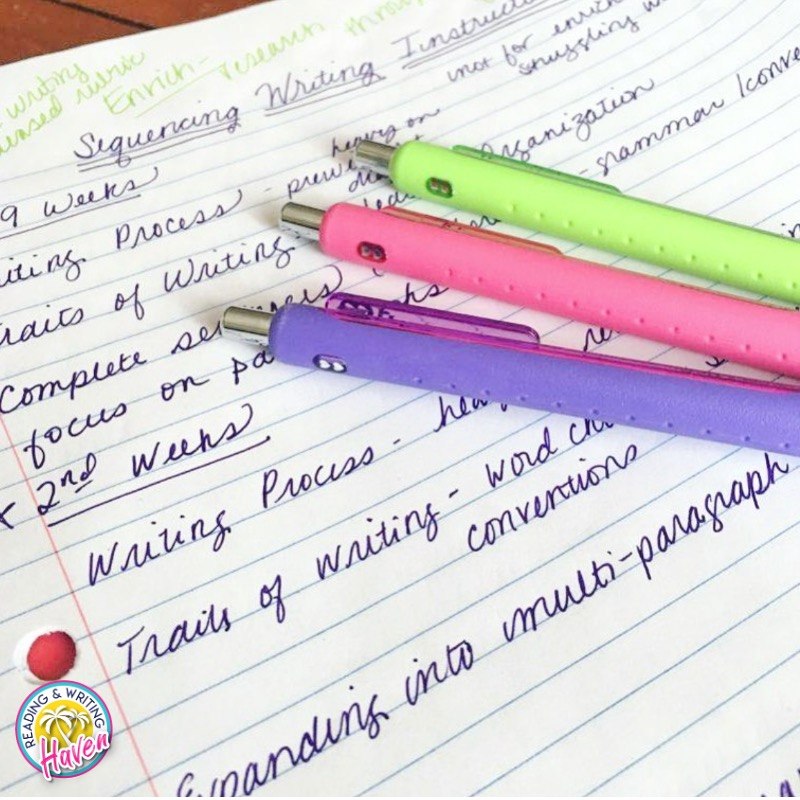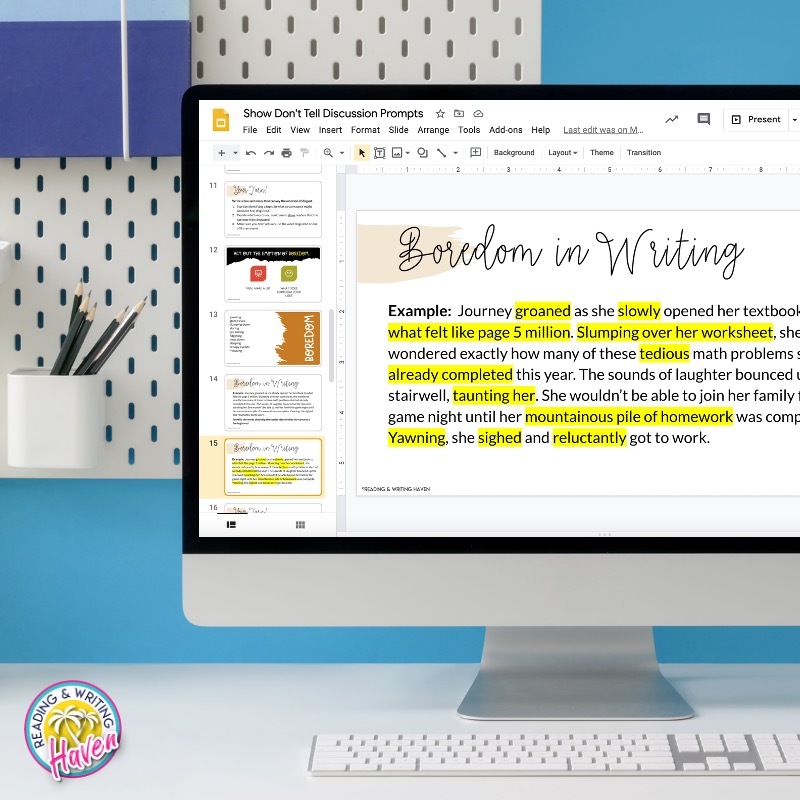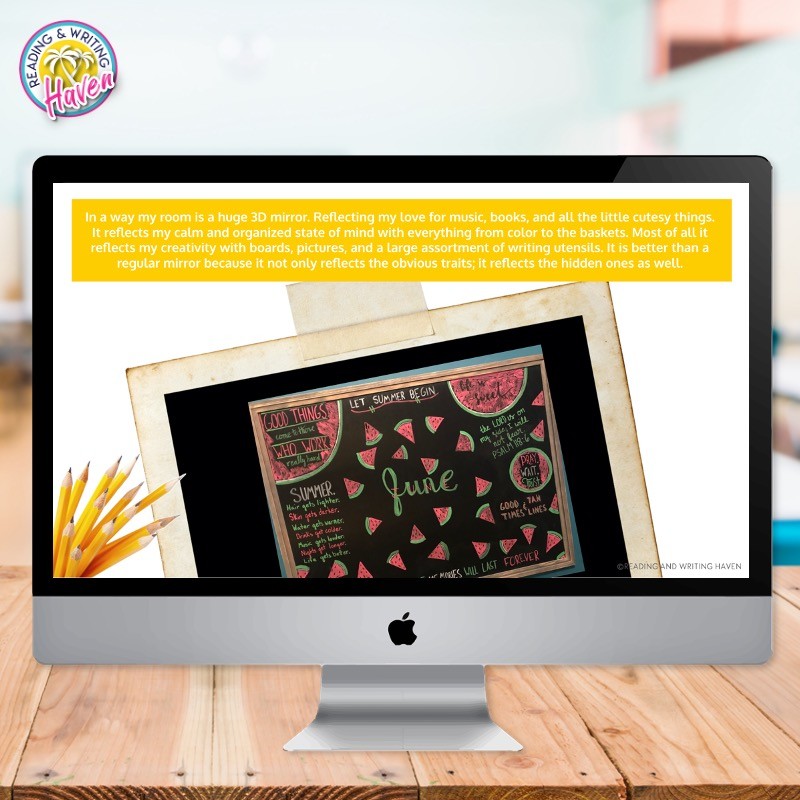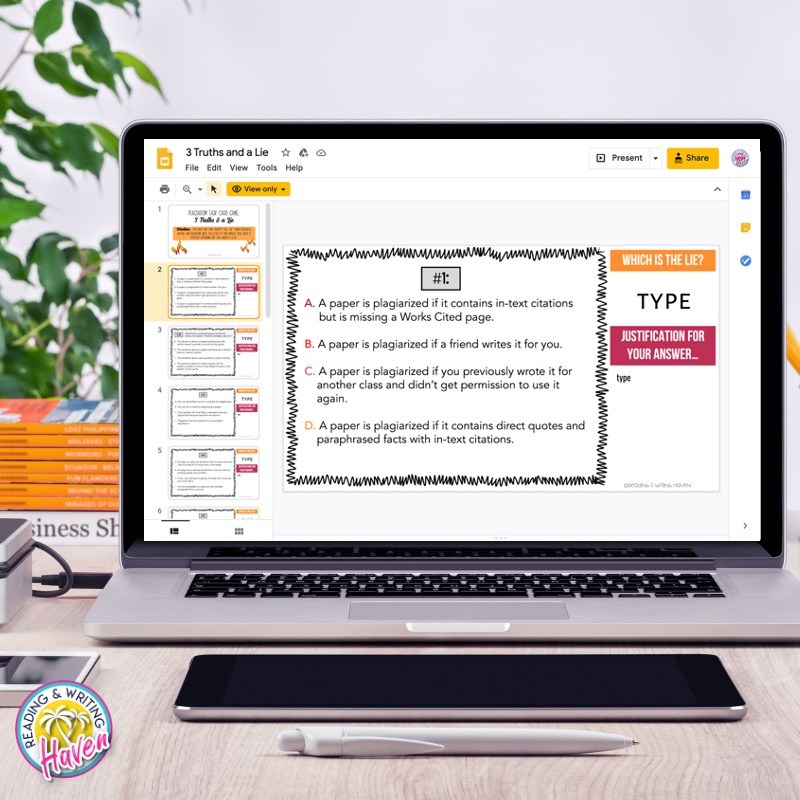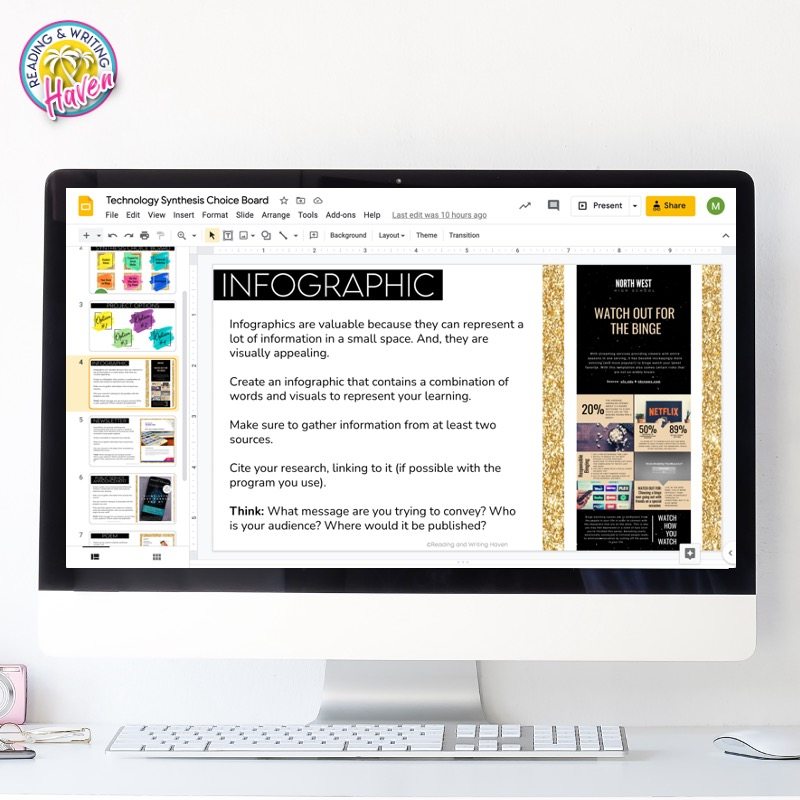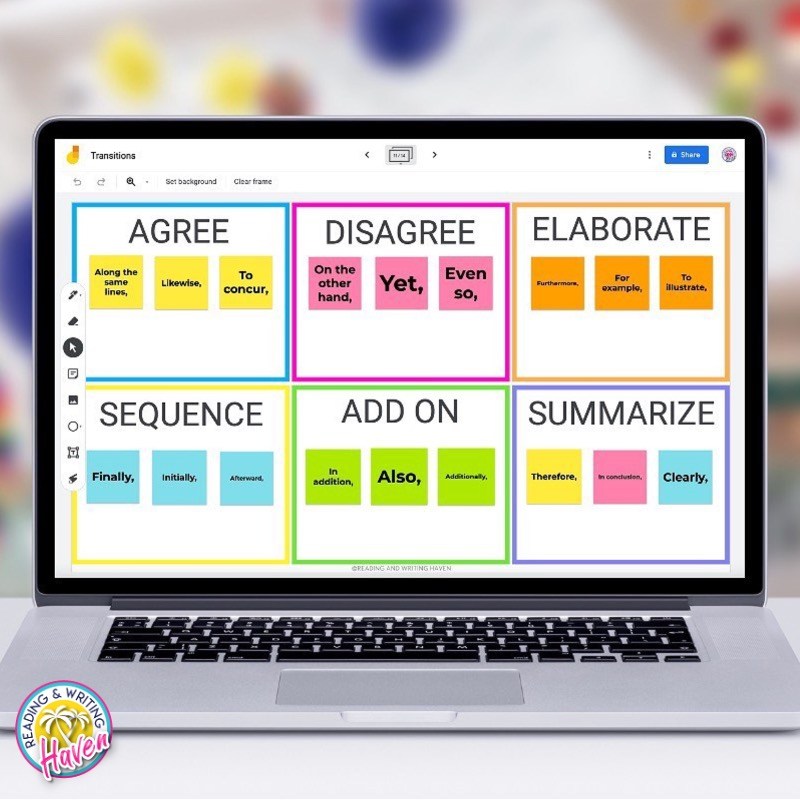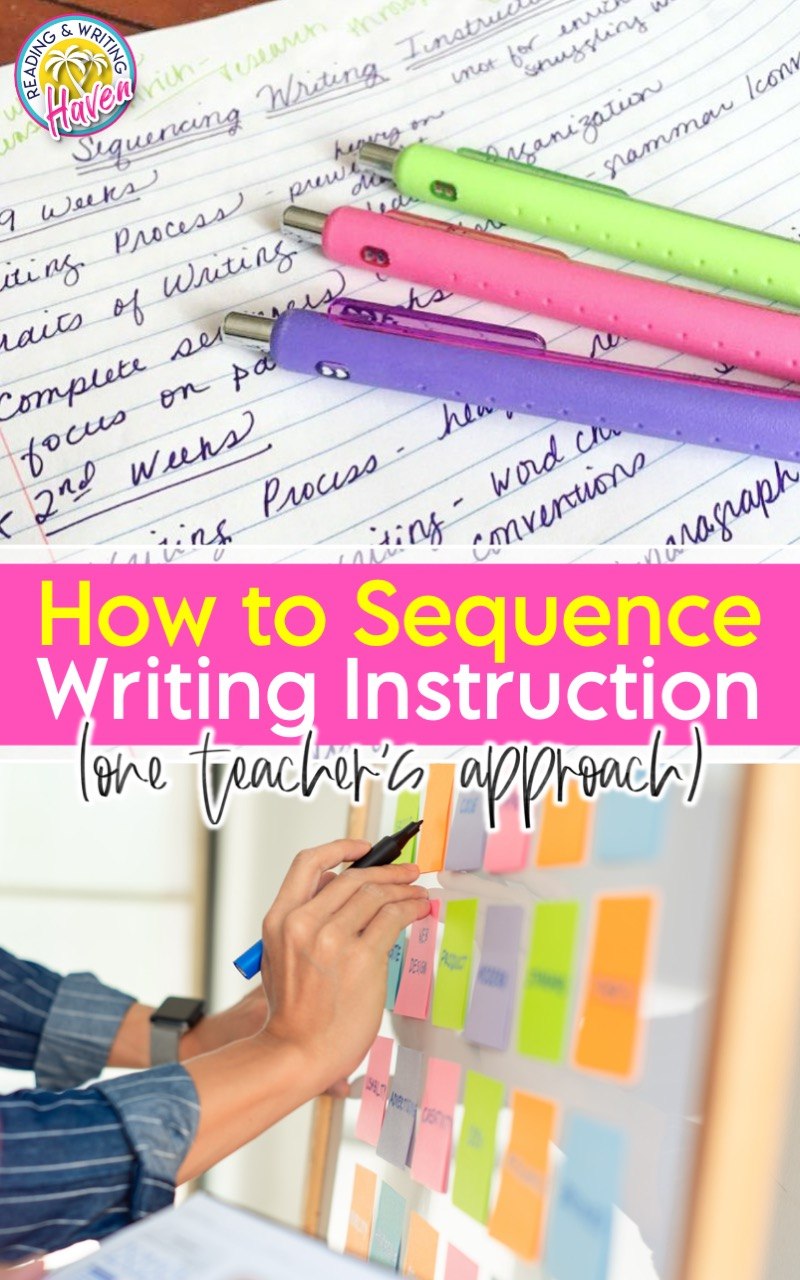How to Sequence Writing Instruction
Wondering how to sequence writing instruction in the secondary ELA classroom? Writing is, by nature, a somewhat abstract and subjective concept. It’s difficult to pin writing instruction down to a formulaic approach. While I don’t claim to have the only answer to this question, I’d like to share what has worked in my classroom. Hopefully, this guidance, which is based upon trial and error over many years, will benefit others.
The first step to deciding upon a logical sequence for writing instruction is sitting down and assessing your choices. We can consider…
- writing standards
- steps in the writing process
- genres or modes of writing
- skills students will need to learn
- traits of skilled writers
I break my writing instruction down into a logical sequence so that each skill builds upon the next. This approach makes teaching writing less overwhelming for us all.
In this post, I’m giving you a glimpse into how I organize and balance a writing curriculum.
FIRST QUARTER WRITING SEQUENCE
Writing Process
During the first nine weeks, I begin my writing instruction by teaching students about the writing process. We go through a quick writing process mini lesson and manipulative activity, which collectively take about two days. During the pandemic, I created a digital writing process introduction since conditions were so different.
- Writing Process Lesson and Manipulative Activity (in-person 2 day lesson)
- Stages of the Writing Process with a Sentence (1 week’s worth of digital bell ringers)
As students write during the first quarter, we focus mainly on brainstorming and drafting. We may do some quick revision and editing activities, but it takes a good nine weeks for my students to understand that I actually expect them to complete prewriting thoughtfully. I spend time teaching them different brainstorming methods so that they can choose the approach that works best for them.
Beginning the year with the writing process sets the tone for writing workshop all year.
Email Etiquette
I follow the writing process with email etiquette. Starting the school year with email etiquette is a game changer! It helps expand students’ understanding of writing.
Writing is more than essays, and it’s relevant outside of school. It improves relationships, helps avoid unnecessary conflict, and makes communication more efficient.
We can’t get upset when students email us rudely if they’ve never been taught that email writing is a GENRE that requires a certain level of finesse.
Tell your students you are going to let them in on some secrets that some adults have not yet mastered! Make sure to celebrate and draw attention to just how MUCH your students’ writing skills change, and they will be motivated by visible, quick growth.
Summarizing
The beginning of the year is a lot of paragraph and sentence writing in my classroom. As we work on reading strategies and dive into short stories and nonfiction articles, I ask students to practice a variety of skills embedded in reading standards. In doing so, students are writing!
In my classroom, the reading skill that always requires the most intense writing training is summarizing nonfiction. Students put on their reporter hats and practice some structured nonfiction summary paragraph writing. This lesson is a natural connection between reading and writing but also a convenient bridge from short, fun writing assignments to longer, more formal pieces.
More specifically, students practice putting ideas into their own words and writing complete sentences. Nonfiction summarizing is also a good spot to teach about the importance of transitional words and phrases to help readers follow along.
Literary Analysis
The first formal piece students write for me is a literary analysis essay. It’s a culminating piece after we read a variety of fiction and nonfiction pieces, practicing analytical skills along the way. Students read different fiction and nonfiction genres and use graphic organizers to scaffold their analysis of theme.
The unit is perfect for first nine weeks because it pairs well with any curriculum, and it also forces strong, time-saving connections between reading and writing. As an ELA educator, I like knowing that students are honing their reading standard skills while also practicing their writing standard skills in short sittings.
As far as specific writing skills, we work on paragraphing, review thesis statements, and cover how to cite literature in writing.
Throughout the year, students continue with their literary analysis work through a variety of reading graphic organizers, one pagers, and response to reading journals.
Grammar in Writing
In my classroom, grammar and writing go hand-in-hand. I want my students to demonstrate grade-level mastery of conventions when composing, especially regarding grammar skills we have already learned in class. If you want my insights about how to work grammar into the curriculum, you can read about how I have found success with sequencing grammar instruction.
SECOND QUARTER WRITING SEQUENCE
Whereas first semester has a strong focus on pre-writing, I ramp up the writing process second nine weeks by zeroing in on revising and editing. Revision stations, peer editing circles, and common error presentations help students search through their writing with a fine-toothed comb. We don’t neglect pre-writing and drafting, but my emphasis on them fades into the background.
During second quarter, lessons often focus on word choice and sentence fluency. We talk about powerful, precise words, how to show instead of tell, and how to use the thesaurus purposefully. As my students revise, many of our conversations revolve around these traits of writing.
In terms of grammar, I ask my students to demonstrate understanding of how to use and punctuate sentence types and verbals to create a fluid piece.
Narrative Writing
Because my choice reading program focuses on mystery, horror, and suspense during the month of October, it’s a fun time of year to focus on narrative and descriptive writing skills. When students are reading descriptive texts, ask them to study the author’s techniques.
How has the author used word choice and sentence fluency to create suspense? Does dialogue speed up the story’s pace or slow it down? Does the point of view impact the reader’s perspective? How does the author show the reader what is happening or how a character feels instead of telling us?
Around Halloween season, these are two engaging, low-stress writing lessons students enjoy:
Informative Writing
Second nine weeks is when I expect my students to begin writing a formal essay that incorporates research. We learn about MLA direct quotations during this time. Students may have already practiced them with literature during their literary analysis essays, but citing research requires a different thought process.
Because informative writing can be boring if we let it, I have tried to create ways to make this unit more engaging. The world is moving to more visuals. Think about everything students want to partake in on screens…movies, music videos, FaceTime, Youtube, vlogs, and social media. So, I began a photo essay adventure.
With photo essays, I love how students can choose any topic and use the essay as a platform to inform the world about an important topic. Students can create them on a doc, slide, or website. And, teachers have the flexibility to differentiate the photo essay to meet the unique needs of their learners.
In addition to direct quotations, students practice writing an informative thesis, topic sentences, supporting details, and closing sentences. Photo essays allow students to choose their essay structure (i.e. – problem and solution, compare and contrast, cause and effect), or the teacher can assign one.
We work on catchy introduction paragraphs and final paragraphs that provide closure. Plus, students get to build on their descriptive writing skills and play with multimedia and headings.
Literature
Second quarter has usually been a time when we are reading and analyzing lengthier literature together as a class or in small groups. Over the years, I’ve read whole class texts like Romeo and Juliet, Lord of the Flies, Beowulf, and Animal Farm (to name a few) as well as studied literature circle novels with students during this time of year.
The descriptive and informative writing units can be connected to any literature study by focusing on how the author has used certain writing techniques to create his or her style. Students can then think about their own author style and how they want to see it develop.
THIRD QUARTER WRITING SEQUENCE
During third nine weeks, we cover an exhaustive research writing unit. I take my time going over all the details of analyzing source credibility, annotating research, paraphrasing, summarizing, directly quoting, and plagiarizing. At first, students complete short paragraphs to apply these skills.
Eventually, we write a whole argumentative research paper.
Argumentative Writing
Because we have already covered brainstorming, drafting, revising, and editing during first semester, it’s easy to incorporate these stages of the writing process during third nine weeks. The new concept we study is publishing. Since MLA has so many formatting guidelines, students learn how to format their papers, citations, and Works Cited pages properly. We talk about creative ways to publish writing, especially different formats for argumentative writing. Students also share their research with the class.
Voice is one of the most difficult writing skills to teach, but my freshmen seem to understand it better when we study voice during our research unit. We talk about how word choice, sentence fluency, and the pillars of persuasion all lend to a formal or informal and a knowledgable, biased, or ignorant voice.
New writing skills I emphasize are claim and counterclaim, strategies for writing attention getters and clinchers (closing sentences), and transitional sentences. By third quarter with older students, they are ready to be challenged with writing. Transitional sentences are typically not a skill they have practiced before, and they often catch on quickly. (You’ll find these lessons in my argumentative writing unit.)
By this point in the year, we’ve covered the bulk of our grammar curriculum and state testing is quickly approaching, so students are also expected to demonstrate command of grade-level conventions.
FOURTH QUARTER WRITING SEQUENCE
At the end of the year, we have some fun with the skills I’ve taught throughout the year. I sprinkle in a few new, creative writing ideas as well. Fourth quarter is a time to play with writing, to write independently, and to write shorter pieces to keep skill sets sharp but not overburden teacher and students.
Narrative Writing
We are often in the middle of a mythology unit fourth nine weeks, so it’s easy to implement short research pieces and even some creative writing. Students have enjoyed focusing on dialogue and narrative writing as they create an extra “episode” of Odysseus’s journey.
I have a copy of Mythical Monsters*. Students enjoy selecting a new monster Odysseus and his crew don’t encounter on their voyage to be the villain of their episode. However, because the format of this narrative writing is a children’s book, students are challenged to consider point of view, ideas, and word choice. How could Odysseus’s story be adapted for a younger audience?
As we write, we are constantly using the terminology for writing traits and the writing process that we have learned throughout the year.
Multi-Genre Writing
My favorite way to end the year in writing is with a specific type of genius hour called the multi-genre research project. First, students choose a topic of interest. Then, they research it extensively! Finally, students write a variety of genres (formal and informal) to convey their learning. They compose creative recipes, lists, creative nonfiction, poetry, and SO much more.
If you’ve never tried a multi-genre project with students, a great way to introduce the general idea is by explicitly teaching students what it means to synthesize. Through a synthesizing lesson, students learn that putting multiple sources of information together to create something new and original is challenging and fun.
The multi-genre project is a perfect culminating activity because students can review genres they’ve already been taught or be challenged by trying something new. If you’re a fan of National Poetry Month, poems work really well with this type of project. And, it’s an ideal platform for honing peer feedback skills. Students meet weekly in small groups to share their genre of the week, and I sit with each group, coaching them through how to kindly provide meaningful feedback and how to receive it gracefully.
Organizing my writing instruction in this way has made teaching writing manageable for me and as enjoyable as possible for my students. Sequencing writing instruction is not easy. It takes many years of trial and error to find a method that works. Even when you do, a new group of students presents fresh challenges, and tweaking is necessary. Hopefully this outline will provide you with insight and guidance as you design your writing curriculum for your own students.
FURTHER READING
- How to Sequence Grammar Instruction
- How to Run a Full-Choice Classroom Book Club
- Email Etiquette: Teaching Students How to Email a Teacher
RELATED RESOURCE
Use these Jamboard activities to supplement short mini-lessons throughout the year!
[sc name=”mailchimp1″]
The * denotes an affiliate link. This means that if you click through and purchase using the link in this article, I will receive a small commission at no extra cost to you.

